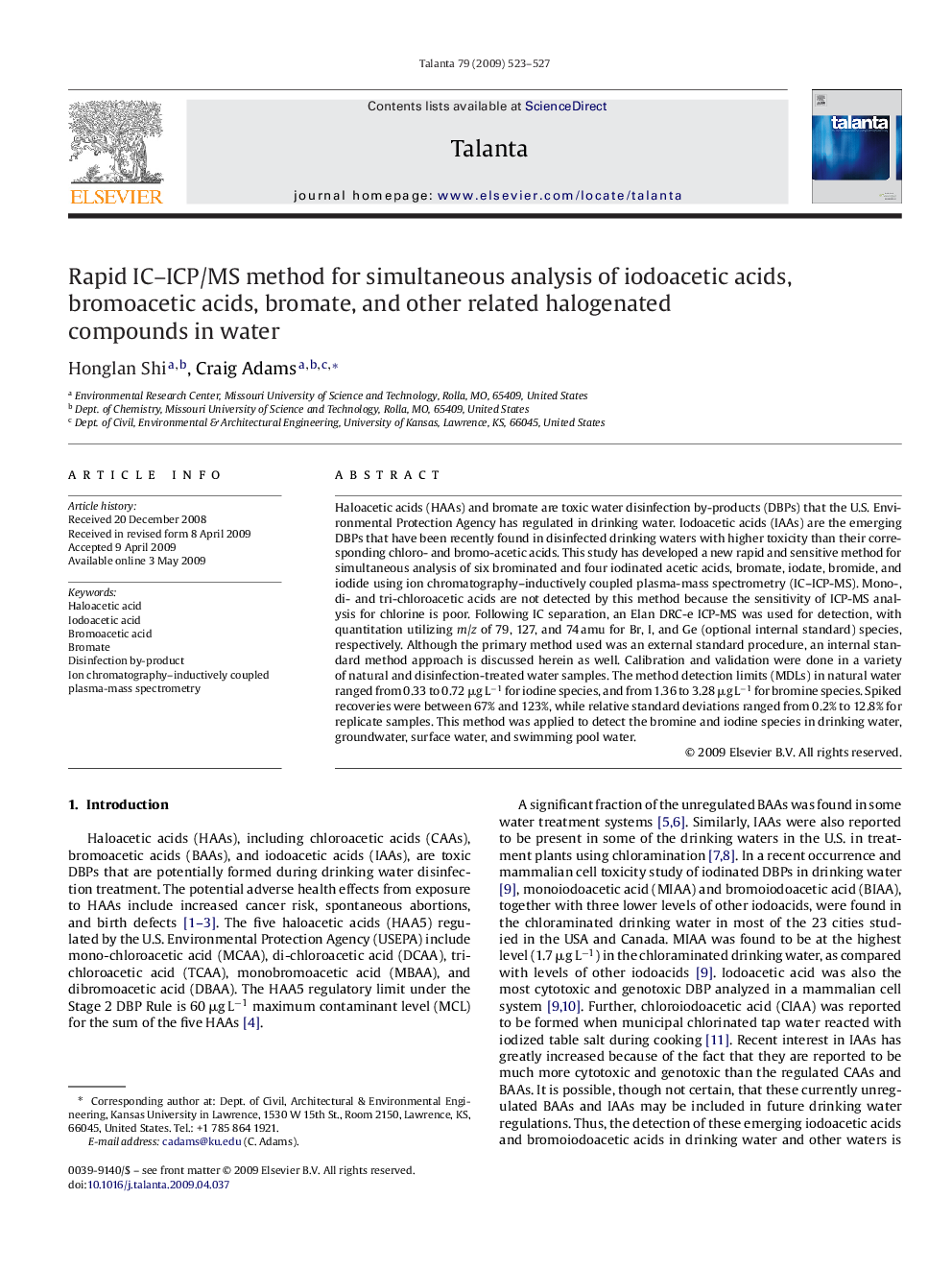| Article ID | Journal | Published Year | Pages | File Type |
|---|---|---|---|---|
| 1244838 | Talanta | 2009 | 5 Pages |
Haloacetic acids (HAAs) and bromate are toxic water disinfection by-products (DBPs) that the U.S. Environmental Protection Agency has regulated in drinking water. Iodoacetic acids (IAAs) are the emerging DBPs that have been recently found in disinfected drinking waters with higher toxicity than their corresponding chloro- and bromo-acetic acids. This study has developed a new rapid and sensitive method for simultaneous analysis of six brominated and four iodinated acetic acids, bromate, iodate, bromide, and iodide using ion chromatography–inductively coupled plasma-mass spectrometry (IC–ICP-MS). Mono-, di- and tri-chloroacetic acids are not detected by this method because the sensitivity of ICP-MS analysis for chlorine is poor. Following IC separation, an Elan DRC-e ICP-MS was used for detection, with quantitation utilizing m/z of 79, 127, and 74 amu for Br, I, and Ge (optional internal standard) species, respectively. Although the primary method used was an external standard procedure, an internal standard method approach is discussed herein as well. Calibration and validation were done in a variety of natural and disinfection-treated water samples. The method detection limits (MDLs) in natural water ranged from 0.33 to 0.72 μg L−1 for iodine species, and from 1.36 to 3.28 μg L−1 for bromine species. Spiked recoveries were between 67% and 123%, while relative standard deviations ranged from 0.2% to 12.8% for replicate samples. This method was applied to detect the bromine and iodine species in drinking water, groundwater, surface water, and swimming pool water.
